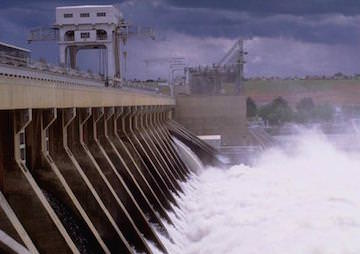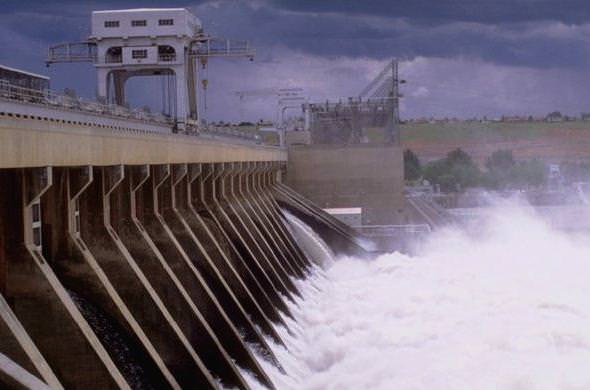More Droughts May Mean Less Electrical Power
Rising temperatures and reduced rainfall will make the flow of rivers less dependable, affecting supplies to the electricity generators that rely on them.
By Tim Radford / Climate News Network

The powerful flow of rivers such as the Columbia in Oregon could be greatly reduced. (National Weather Service Forecast Office via Wikimedia Commons)
This Creative Commons-licensed piece first appeared at Climate News Network.
LONDON — Climate change could threaten the electricity supply around the world, according to new calculations. That is because the power generation depends on a sure supply of water.
But climate change also promises greater frequencies and intensities of heat and drought. So more than half of the world’s hydropower and thermoelectric generating plants could find their capacity reduced.
Michelle van Vliet, an environmental scientist at Wageningen University in the Netherlands, and colleagues from the International Institute of Applied Systems Analysis in Austria report in Nature Climate Change that they modelled the potential performance in the decades ahead of 24,515 hydropower plants and 1,427 nuclear, fossil-fuelled, biomass-fuelled and geothermal power stations.
Global consumption
Thermoelectric turbines — which generate power directly from heat, and rely on water as a coolant — and hydropower plants currently generate 98% of the planet’s electricity. But global water consumption for power generation is expected to double in the next 40 years as economies develop and the population continues to grow.
The scientists found that reductions in stream and river flow and the rise in levels of water temperature could reduce the generating capacity of up to 86% of the thermoelectric plants and up to 74% of the hydropower plants in their study.
“We clearly show that power plants are not only causing climate change, but they might also be affected in major ways by climate.”
This means that power from hydro stations could fall by 3.6% in the 2050s and 6.1% in the 2080s, because of reduced stream flow. And by the 2050s, the monthly capacity of most of the thermoelectric power plants could drop by 50%.
Dr van Vliet says: “In particular, the United States, southern South America, southern Africa, central and southern Europe, Southeast Asia and southern Australia are vulnerable regions, because declines in mean annual stream flow are projected, combined with strong increases in water temperature under changing climate.
“This reduces the potential for both hydropower and thermoelectric power generation in these regions.”
Constrained supply
Forewarned is forearmed: there are steps that the energy industry could take to make generation more efficient and to adapt to a world in which water supply might be constrained, at least for part of the year.
But the report suggests that the planning for a different tomorrow should start now. “In order to sustain water and energy security in the next decades, the electricity industry will need to increase their focus on climate change adaptation, in addition to mitigation,” Dr van Vliet says.
Keywan Riahi, energy programme director at IIASA and a co-author of the report, says: “This is the first study of its kind to examine the linkages between climate change, water resources and electricity production on a global scale.
“We clearly show that power plants are not only causing climate change, but they might also be affected in major ways by climate.”
Tim Radford, a founding editor of Climate News Network, worked for The Guardian for 32 years, for most of that time as science editor. He has been covering climate change since 1988.
Your support matters…Independent journalism is under threat and overshadowed by heavily funded mainstream media.
You can help level the playing field. Become a member.
Your tax-deductible contribution keeps us digging beneath the headlines to give you thought-provoking, investigative reporting and analysis that unearths what's really happening- without compromise.
Give today to support our courageous, independent journalists.






You need to be a supporter to comment.
There are currently no responses to this article.
Be the first to respond.